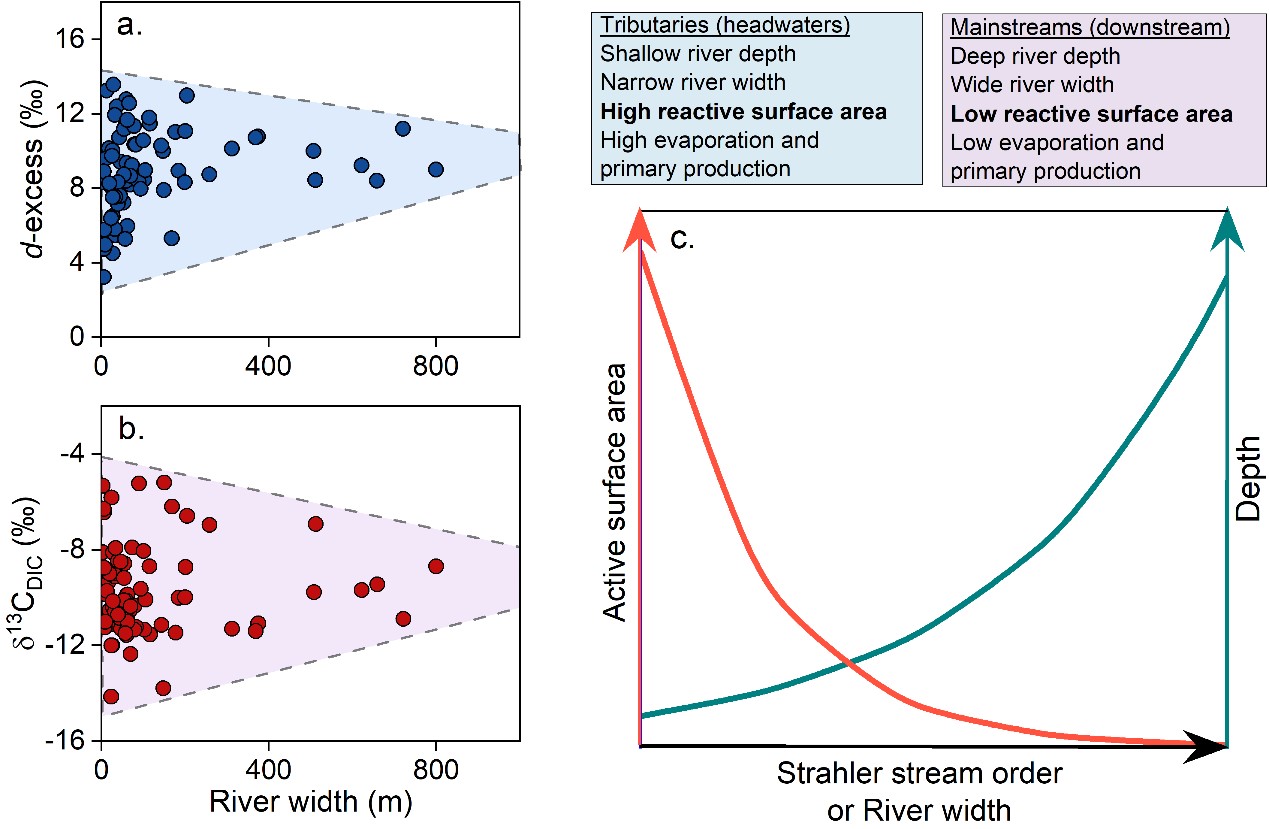Rivers are important not only for global material transportation and as integrators of terrestrial biogeochemical processes, but also as biogeochemical reactors. The river system works as a network for water and carbon transportation, but the amount of terrestrial carbon entering rivers and the internal cycling pathways remain elusive. In order to decipher global water and carbon cycling through river systems, it is necessary and important to understand the in-stream processes and the internal cycling mechanisms of carbon and water.
Research groups of Prof. Si-Liang Li and Prof. Sheng Xu studied the carbon biogeochemical processes in tropical and sub-tropical catchments using water chemistry, water isotopes (dD and d18O) and carbon isotopes (d13C and D14C),aiming to reveal the spatial heterogeneity of carbon distribution and effects of secondary processes on carbon cycling in the river systems. Researchers from Swedish University of Agricultural Sciences, University of Wisconsin-Milwaukee, University of Glasgow and University of Hong Kong also participated in this study.

Fig. The relationship of d-excess versus river width (a) and d13CDIC versus river width (b). Schematic view of the hydrological processes and biogeochemical processes across tributaries-to-mainstream transition (c).
Through this study, some conclusions have been reached. (1) Although DIC can represent the chemical weathering intensity, the carbon isotopes of which are highly affected by riverine biogeochemical processes. (2) The water chemistry and carbon isotopes show high spatial heterogeneity, showing intense photosynthesis characteristics. (3) The composition of riverine particulate organic carbon (POC) was highly controlled by aquatic photosynthesis, and mainly from autochthonous source. (4) The water isotopes show strong evaporation characteristics, and evaporation was synchronous with aquatic photosynthesis. (5) Aquatic photosynthesis mainly occurred in the headwater segments, because of the broad water-air interface.
This study was supported by National Key R&D Program of China (Grant No. 2016YFA0601002) and National Science Fund for Distinguished Young Scholars (Grant No. 41925002).
Article information
Zhong, J., Wallin, M. B., Wang, W., Li, S.-L., Guo, L., Dong, K., Ellam, R. M., Liu, C.-Q., and Xu, S., 2021, Synchronous evaporation and aquatic primary production in tropical river networks: Water Research.
Zhong, J., Chen, S., Wang, W. F., Yan, Z. L., Ellam, R. M., and Li, S. L., 2020, Unravelling the hydrological effects on spatiotemporal variability of water chemistry in mountainous rivers from Southwest China: Hydrol. Process.
Chen, S., Zhong, J., Li, S., Ran, L., Wang, W., Xu, S., Yan, Z., and Xu, S., 2021, Multiple controls on carbon dynamics in mixed karst and non-karst mountainous rivers, Southwest China, revealed by carbon isotopes (δ13C and Δ14C): Science of the Total Environment.